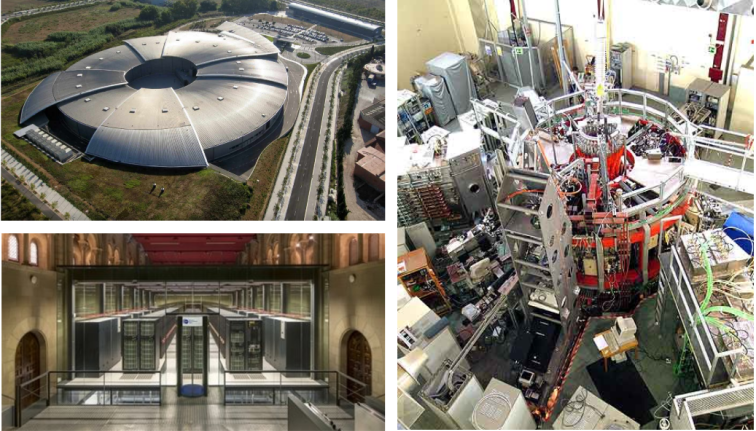
The Unique Scientific and Technical Infrastructures (ICTS) in Spain are facilities, resources and services for the development of top-quality cutting-edge research as well as communication, exchange, and preservation of knowledge, technology transfer, and promotion of innovation. They are either unique or exceptional in their fields, have a high cost of investment, maintenance, and operation, and are of a strategic importance that justifies their availability to all actors in the field of R&D&I.
For example, the Gran Telescopio de Canarias (the Great Telescope of the Canary Islands) is used, among others, to monitor potentially dangerous asteroids and the ALBA synchrotron is used to study the material’s internal structure. They all share three fundamental characteristics: they are infrastructures with public ownership, unique and open to competitive access.
There are a total of 29 ICTS located throughout Spain. The full list with links can be found using this link. Among the ICTS, there are several contributing to the research and development in nuclear fusion energy. The leading ICTS in the fusion field is the TJ-II facility located at the National Fusion Laboratory (NFL) in Madrid. It is a fusion reactor of a heliac type used to carry out studies with respect to stability, equilibrium and transport in plasmas confined by twisted magnetic fields. The NFL also has a division related to the study of new materials able to withhold high plasma temperatures reached in fusion reactors.
Further experimental ICTS facilities involved in fusion research are the National Center of Accelerators (CNA) and the Spanish Center for Pulsed Lasers (CLPU) located in Andalucia and Salamanca, respectively. The fusion research at CNA is focused on the characterization of scintillator materials for fusion diagnostics. Diagnostics are devices installed in fusion machines to measure several plasma parameters to assess their performance. The fusion research carried out at CNA has contributed to several diagnostic set-ups installed in magnetic confinement fusion machines around the world including ASDEX Upgrade tokamak, Garching, Germany.
There are two ICTS related to nuclear fusion energy in the Barcelona area. Barcelona Supercomputing Center (BSC-CNS) hosts both of them: the supercomputer facilities MareNostrum and MinoTauro. Millions of simulations are carried out in these supercomputers not only for fusion but also for other scientific disciplines such as meteorology and biology. In regards to fusion, BSC supports several research lines: development of new materials using Artificial Intelligence (AI), high temperature superconductors that could be used in the future fusion reactors as well as fundamental research on the plasma stability, equilibrium and the heating of fusion plasmas. The use of large-scale simulations using high performance computing can help overcome big scientific and engineering challenges in the field prior to the construction of new facilities such the demonstration fusion power plan DEMO.
Source: Ministry of Science and Innovation, Government of Spain.
